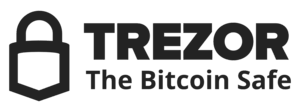Crypto for Advisors: Bitcoin, IRAs and Tax Prep
source: CoinDesk: Bitcoin, Ethereum, Crypto News and Price Data
2025. Jan. 16. 16:00

In today’s issue, Bryan Courchesne from DAIM explains how bitcoin can be included in U.S. Individual Retirement Accounts, what to watch out for, and the importance of working with a financial advisor.
Then, Eric Tomaszewski from Verde Capital Management shares tips on preparing for tax season in Ask and Expert.
– Sarah Morton
You’re reading Crypto for Advisors, CoinDesk’s weekly newsletter that unpacks digital assets for financial advisors. Subscribe here to get it every Thursday.
Bitcoin Could Be On The Verge Of A Major Breakout: Is Your IRA Ready For The Opportunity?
Top researchers and very large investors are putting price targets on bitcoin that project it is potentially on the brink of a significant bull run. Tom Lee says bitcoin will be $250,000 this year, and Michael Saylor says bitcoin will get to $500,000 overnight.
Imagine having a substantial allocation of bitcoin in your retirement account before this bull run kicks into ultra-high gear – a tax-advantaged allocation funded by an old Individual Retirement Account (IRA) you may have forgotten about. The opportunity is right in front of you, but it’s essential to set it up the right way with a platform that offers comprehensive support and peace of mind.
Step 1: Self-Direct Your IRA Or Work With An Advisor
When investing in bitcoin through your IRA, security and compliance are paramount. A qualified custodian ensures your retirement assets are managed per IRS regulations, offering a layer of protection beyond simple wallet management. If you select a self-directed method, know it will be up to you to handle the transfer and make investment decisions. If you go with an advisor, they will handle the bulk of the transfer process for you, all the way through managing the portfolio.
Self-directing means you have to watch your investments, which are vulnerable to errors, fraud, or mismanagement. An advisor has done the due diligence on service providers and regularly monitors accounts for the best outcome.
Step 2: Set Up Your Tax-Advantaged Crypto IRA
Once you have chosen a self-directed platform or advisor, the next step is signing up, which involves executing and approving a client agreement. While the process is similar for both options, working with an advisor offers critical advantages. An advisor can help design a portfolio tailored to your risk profile, guide you in determining the appropriate position sizes relative to your other investments, and assist in implementing a long-term investment plan that aligns with your financial goals. In contrast, self-directed platforms don’t provide personalized guidance, don’t care what you buy, and are often incentivized to encourage frequent trading, which can erode your returns over time.
Additionally, setting up the correct IRA structure is crucial. For example, if you already have a Traditional IRA, you’ll need to open a new Traditional IRA with the crypto IRA provider to maintain consistency. Transferring assets can be complicated, especially if you're unsure which investments to sell, how much to roll over, or how to track the transfer process. An advisor can guide you through these steps, handling much of the complexity and ensuring a smoother experience.
Step 3: Invest For Growth As The Crypto Sector Surges
As discussed above, a self-directed platform leaves you on your own to select investments, determine position sizes, and decide when to buy or sell. If you’re confident in your ability to outperform the market and manage these decisions independently, this approach might work for you – but it demands time, expertise, and discipline, with no safety net if mistakes are made.
In contrast, working with an advisor offers a distinct advantage. Advisors provide guidance tailored to your financial goals, help you select high-quality investments, and may offer pre-designed portfolios with proven track records. Rather than going it alone, you’ll gain access to a team of experts whose full-time job is managing digital assets and staying ahead of industry trends.
As many experts predict, the upcoming bitcoin bull run could drive prices well into six figures. By securing a bitcoin IRA today, you can position yourself to benefit from this potential growth while leveraging tax advantages and professional management to support long-term success.
- Bryan Courchesne, CEO, DAIM
Ask an Expert
Q. It’s the beginning of a new year. What are some things I should consider so I can kickstart the year effectively?
It's important to focus on systems more than goals. Goals will give you direction, while systems will create progress. Identify daily and weekly actions that will help you achieve larger goals, personally and professionally. From there, start small, repeat consistently, and tie new habits to existing ones to help you remember and reinforce.
Q. It's 2025, so what strategies can I use for tax year 2024?
Fortunately, it is not too late to find tax deductions, as there is a range of options to consider. Traditional IRAs, Health Savings Accounts (HSAs), and self-employed retirement plan contributions – such as those made through a SEP IRA or Solo 401(k) plan for freelancers or contractors – are just some of the available options.
Q. How do I tackle an upcoming tax bill in April?
Everything comes back to planning. If you are addressing this situation today, work with professionals to project the needed amount.
From there, prioritize your liquidity needs and goals over the upcoming months while developing a payment plan.
This may require adjusting your budget and exploring creative payment options, such as IRS installment plans, securities-based lending, etc.
- Eric Tomaszewski, Financial Advisor, Verde Capital Management
Keep Reading
President-elect Trump is set to host an inaugural crypto ball.
Will Meta’s board of directors consider a bitcoin strategic reserve after being asked by one of the company’s shareholders?
Italy’s largest bank, Intesa Sanpaolo, now owns bitcoin.
Bonus: CoinDesk released a new report, Digital Assets: Q4 Highlights & Commentary





